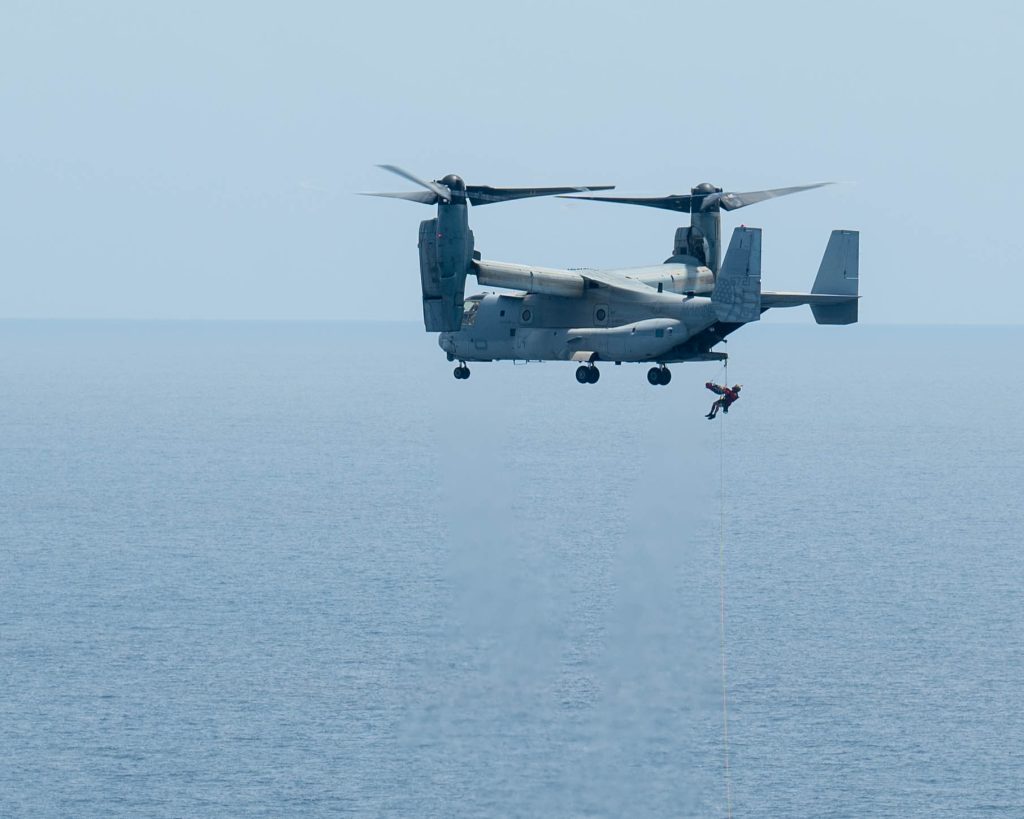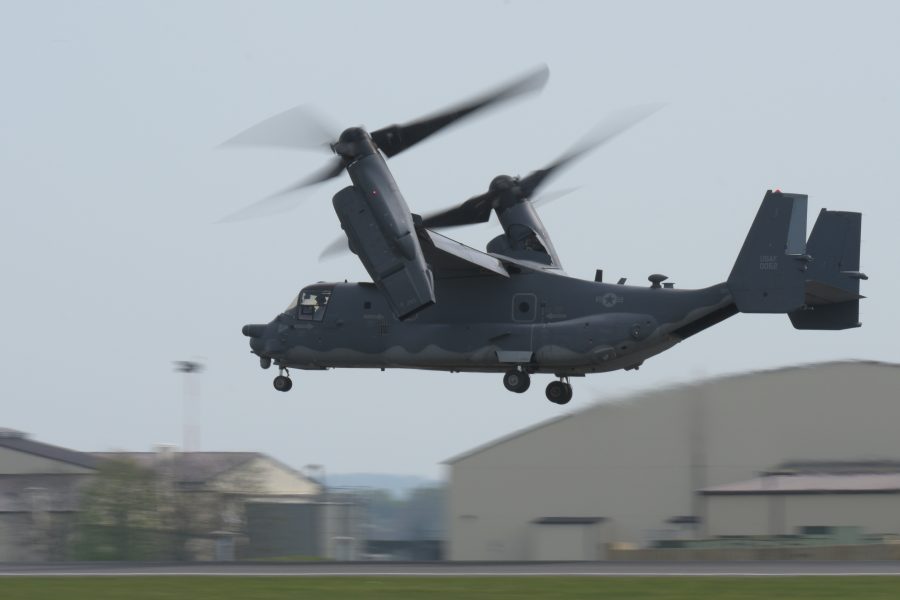The Air Force has begun flying its CV-22 Ospreys again. But that is just the start of a multistep process to return the fleet to normal operations following a deadly crash last year, service officials said.
“As of today, several aircraft have conducted functional check flights, the first step in resuming flying operations,” an Air Force Special Operations Command (AFSOC) spokesperson said May 2. “Each individual aircraft will be cleared for flight.”
AFSOC operates all of the Air Force’s fleet of around 50 Ospreys, one of which crashed off the coast of Japan on Nov. 29, prompting the Pentagon to ground all its Ospreys in December. Eight Airmen died in the crash.
While an accident investigation board has yet to release a full, public report, DOD officials have said they know that a part of the aircraft failed and that this was the cause of the crash, not pilot error.
The V-22 Joint Program Office, which falls under Naval Air Systems Command (NAVAIR), made the decision to ground the fleet in December before lifting that grounding in March, after which the Marines and the Navy resumed flight operations. The Marines use the Osprey as their primary medium-lift helicopter, while the Navy uses the Osprey for deliveries to aircraft carriers. Both services rely on the aircraft more heavily for day-to-day activities than the Air Force. USAF CV-22s are special operations aircraft will an official mission of “long-range infiltration, exfiltration, and resupply missions for special operations forces,” according to the Air Force.
AFSOC said at the time the grounding was lifted it planned to take a phased approach to returning Ospreys to flight, and the Air Force was the last service to resume flying the Osprey.
The return still has a ways to go. The Air Force is just starting its resumption of Osprey training flights, which began only days ago, and fewer than 10 Air Force Osprey flights have occurred during that time, Air & Space Forces Magazine has learned.
As the Air Force requalifies its crews in various missions, the service plans to increase the complexity of the sorties, but that process will take time.
After the grounding was lifted, the Air Force said its Ospreys would undergo more thorough and frequent maintenance checks, and the flight crew would have new procedures for responding to emergency situations.
“We have high confidence that we understand what component failed and how it failed,” V-22 Program Manager Marine Corps Col. Brian Taylor told reporters in March when NAVAIR lifted the Pentagon’s grounding. NAVAIR and AFSOC have declined to identify that part or why it failed.

Ospreys, unique tilt-rotor aircraft that can fly as aircraft and helicopters, have earned a reputation for deadly crashes throughout their history. AFSOC grounded the fleet in 2022 after a series of “hard clutch engagements” during which the clutch slips and reengages, causing spikes in torque. But officials have said that a hard clutch engagement was not the cause of November’s Osprey crash.
“The AFSOC CV-22 fleet is executing the deliberate return-to-flight process,” the AFSOC spokesperson said. “Each individual aircraft will be cleared for flight. Each aircraft is going through maintenance inspections as well as a review of its maintenance records as prescribed by the Joint Program Office. Once those steps are accomplished each aircraft has a functional flight check before it is cleared finally for routine training flights.”
As for the aircrew, AFSOC said CV-22 crews have been undergoing simulator training as part of their multistep return-to-flight process.
“As each aircraft is cleared, our aircrew will immediately commence flight operations,” the AFSOC spokesperson said.
